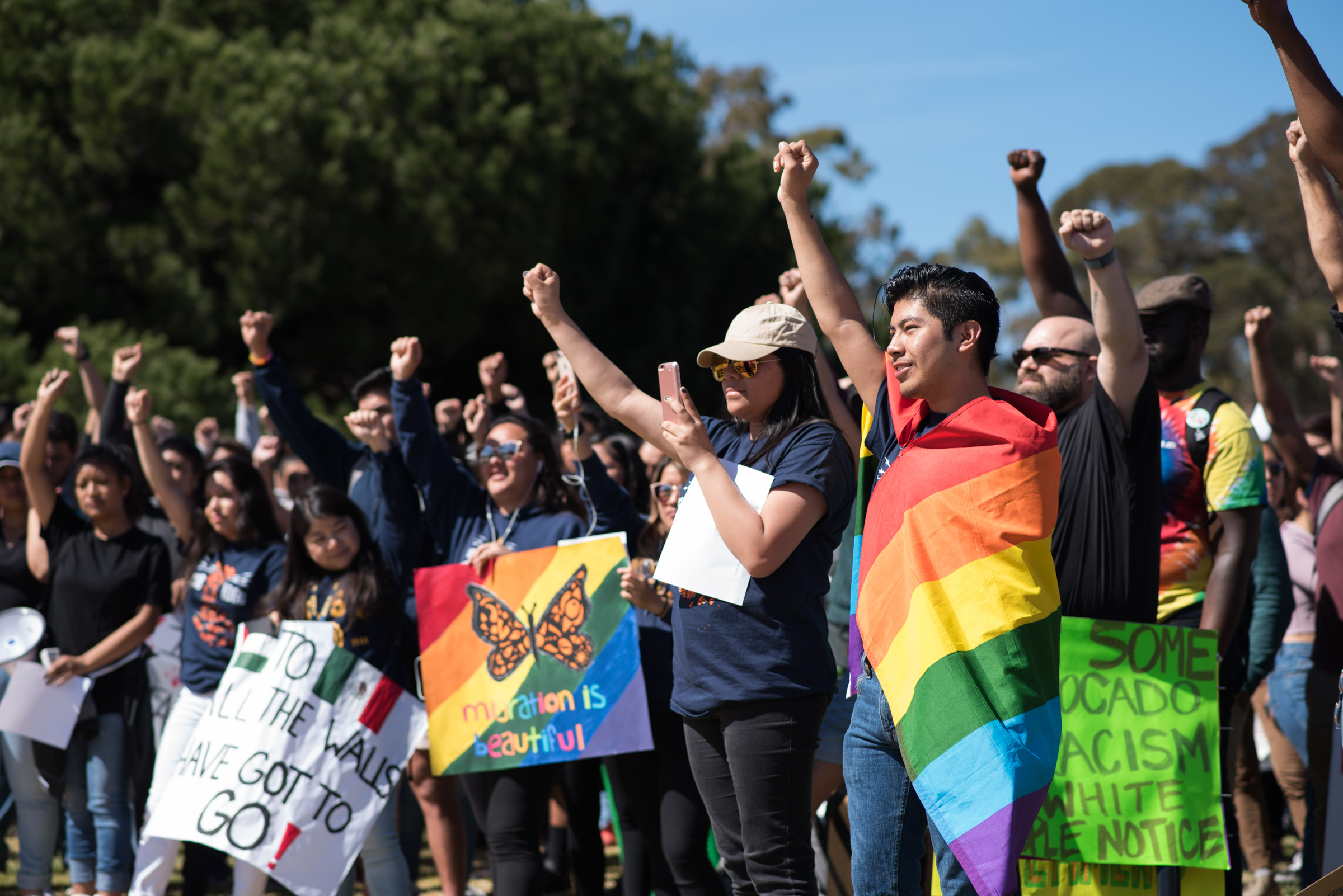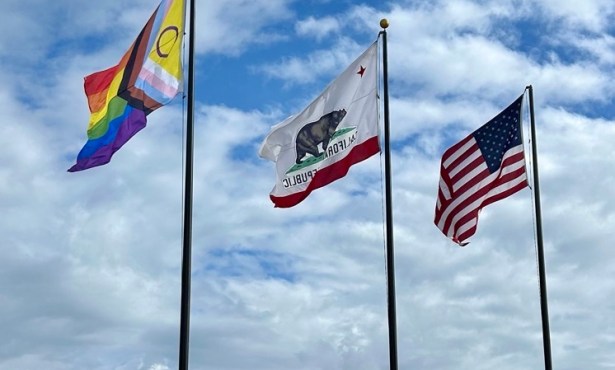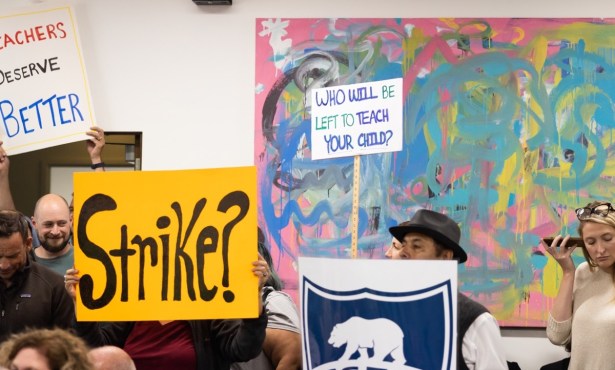Santa Barbara Dreamers Come of Age
Having Grown Up In a Supportive Political Climate, They Now Fight to Maintain Federal Protections

When Elizabeth was in the eighth grade, her mother didn’t let her go on an out-of-state field trip. Assuming the reason was that her parents didn’t have enough money to pay for the trip, Elizabeth’s teacher offered to pay for it himself. What he didn’t know was that Elizabeth was undocumented, and, at the time, neither did she. When Elizabeth wouldn’t stop asking to go on the field trip, her mother finally revealed that money wasn’t the issue. Her fear was that Elizabeth would have to show a passport to board the plane. This was Elizabeth’s first encounter with the limits of her legal status, yet it didn’t change the way she thought about her life and opportunities.
Growing up, Elizabeth didn’t realize that it would be difficult, or even impossible, to attend college. “I just assumed that I would go like the rest of my peers.” In fact, had she submitted her college applications only a year earlier, without the ability to work or obtain financial aid, higher education would have been out of the question. (Her name and those of the rest of the students in this article are pseudonyms, for privacy.)
Elizabeth, along with the other 1.4 million undocumented immigrants who entered the United States as children, is part of the first generation of Dreamers. Often known as the best and brightest of their graduating classes, Dreamers represent the potential beneficiaries of the DREAM Act, which was first introduced in Congress in 2001 as a pathway to citizenship for undocumented youth. Formally named the Development, Relief and Education for Alien Minors Act, the DREAM Act was never passed, yet its name and vision was adopted for the creation of the Deferred Action for Childhood Arrivals, or DACA, as a compromise devised by the Obama administration.
By the time Elizabeth began her junior year in high school, the California DREAM Act of 2012 provided a source of financial aid for undocumented students who did not qualify for federal aid. By her senior year, DACA had just been signed into law as an executive order by President Obama, deferring the threat of deportation on a two-year renewable basis and granting her permission to work. Along with her acceptance to the University of California, Santa Barbara (UCSB), Elizabeth’s future gleamed with opportunity. Unfortunately, this opportunity would prove to be temporary.
Julia, who arrived from the Philippines when she was 7, is also a Dreamer. Throughout middle and high school, Julia was involved in the immigration movement that fought for the rights and benefits that she and the current generation of undocumented students now receive. “We came here out of the need to survive,” Julia said. “What is wrong are the laws and forces that pushed us out of our country, not us ending up here.” Having entered UCSB in the first year that the California Dream Act was implemented, Julia graduated last spring with a degree in Asian American studies. Through DACA, she now works as an administrative assistant at UCLA.
While undocumented students have historically lived on the margins, programs like the California DREAM Act and DACA have significantly improved their ability to access and finance higher education. This improved reality, however, does not alleviate the unique challenges associated with their status, and temporary protections offered by DACA were scheduled to expire on Monday, March 5. In a move that helped continue protections for 800,000 young people, the Supreme Court denied President Trump’s request to bypass a federal appeals court to end protections by the deadline, leaving the fate of the Dreamers uncertain.
In protest and solidarity, the UCSB undocumented community and their allies walked out of their classes and workplaces on March 5 in support of immigration reform. This year, the graduating class of 2018 will include another generation of federally protected undocumented students, and perhaps the last.
Within a Community of Activism
Both Elizabeth and Julia came of age in a supportive cultural and political era for undocumented youth. Recalling the “undocumented and unafraid” chant used during immigration protests in 2006, Julia grew up encouraged to pursue her goals despite her status, emboldened by sympathetic legislation and the community of support behind her.
Neither Elizabeth nor Julia take this community for granted. As UCSB freshmen, they both joined IDEAS, a student organization that stands for Improving Dreams, Equality, Access and Success. IDEAS provides financial, academic and emotional support to undocumented students. When IDEAS formed in 2006, the group consisted of a handful of undocumented students, none of whom received financial aid nor were able to work legally. IDEAS now has about 60 active members, and consists of both DACA and non-DACA undocumented students, as well as supportive allies.
Through IDEAS, undocumented students advocate for support and resources within the university. In collaboration with UCSB staff and faculty, students from IDEAS played an instrumental role in forming the Dream Scholars Resource Team (DSRT) in 2013, the first campus resource team that responds to the academic and legal needs of UCSB’s undocumented students. The group was also part of a UC-wide effort to pressure the former Secretary of Homeland Security, and now UC President, Janet Napolitano to give $5 million in funding to support programs and initiatives for undocumented students throughout the UC system. At UCSB, the funding has been used to create the Undocumented Student Services office and a space on campus for IDEAS meetings and community events.
IDEAS hosted the campus walk-out demonstration on March 5 to garner support for immigration reform and to put pressure on the UCSB administration to fulfill their demands. These demands included creating a campus-wide employment program for students without social security numbers, an immigrant resource center on campus large enough to accommodate different at-risk immigrant populations, and an in-campus attorney that specifically services immigrant and undocumented students and their families.
Continued Challenges
Despite hard-won, basic protections as students and workers, undocumented students grapple with maintaining a stable environment for themselves and their families. Often coming from low-income and undocumented or mixed-status households, undocumented students face enduring challenges throughout their college experience.
“I’ve received resources, advice and tips on how to survive while in college, so in a way I felt like I had a safety net to rely on,” Julia said. “But it was still really hard for me.” While in college, Julia needed to work two jobs to send money to her undocumented parents, who often experienced unemployment. This money also helped cover her mother’s medical expenses until the day she died, and has since helped her father pay his rent.
Doing well academically can also be a challenge for Julia and other Dreamers. Undocumented students sometimes do not receive sufficient preparation for the demands of college-level coursework, entering college with low reading and writing skills. This is unfortunately common for students who come from underfunded school districts. Combined with the personal and professional challenges they face, their ability to not only access higher education but also earn a bachelor’s degree can be precarious at best.
“I felt like my four years of college had been killing me slowly,” Julia said. “The only thing that helped is all the support systems I had there and back home.” Despite the challenges she faces, Julia has never ceased to work or be involved within her community. “I see how much other people struggle and want to help them also get involved,” Julia said. “It honestly does make the biggest difference.”
One of the most difficult problems that undocumented students face is that they are not able to work legally. While both Elizabeth and Julia have the right to work because of their DACA status, another student, Adriana, does not. Because Adriana entered the country in 2009, two years after the eligibility cutoff for DACA, she relies on scholarships, parental contributions, and state loans through the California Dream Act to finance her education. “To me, loans instead of grants is pretty nonsensical because I don’t have a work permit,” Adriana said. “Six months after I graduate I have to start paying back those loans, but how will I do that if I don’t have a job in the first place?”
Like other Dreamers, however, Adriana tries not to feel discouraged by her legal status. “I used to disregard my identity as undocumented since it’s not something I can change,” Adriana said. “But it shouldn’t determine what I am going to do and limit what I want to do.” As an aspiring environmental planner, Adriana faces the same obstacles as other students trying to land a dream career, but she is significantly disadvantaged without a work permit.
“I’m still trying to figure out how I can gain experience in the field,” Adriana said. “I know I need to get internships or work experience, but many positions are not open to undocumented students without DACA … Even if there are paid internships available, I will do the work unpaid just so I can get that experience.” According to Adriana, her biggest struggle is revealing her undocumented status to the contacts she’s made in the environmental field. “I am just as capable as other students, so I only disclose my status when I feel like it is necessary,” Adriana said.
Adriana will be graduating this year with a double major in Environmental Studies and Spanish. “After going through four years of college, I just don’t know how I would feel about taking a job that is not related to what I studied,” Adriana said. “If I start working at a factory, then was my college education worth all these loans? What are they for if I am not even able to get a job I worked so hard to pursue?”
For now, Adriana is gaining resume-building experiences through leadership roles throughout campus, which don’t require documentation. By necessity, Adriana says her mantra has been “not to worry and to just keep doing what I’m doing.”
The Trump Administration
Challenges faced by the undocumented student community were only exacerbated by the election of Donald Trump, to say the least. President Trump, despite taking a sympathetic tone toward the Dreamers, formally announced the end of the DACA program last September. For the next six months after the announcement, the Department of Homeland Security continued renewing expiring DACA permits but discontinued considering new application for legal status.
Considered the “least disruptive” option for termination, the six-month effort to wind down the DACA program was supposed to allow Congress enough time to come up with a permanent solution for a program that protects nearly 800,000 young people from losing their ability to work, study, and live in the U.S. without the fear of deportation. However, without Congressional action, DACA recipients would lose their status and become eligible for deportation.
A solution has yet to be reached. As the March 5 deadline loomed, efforts to enact immigration reform for the Dreamers has been deterred by partisan gridlock. Though several proposals to grant citizenship for the Dreamers were submitted, Trump declined any version that did not limit family reunification (termed “chain migration” by Trump), end the visa lottery program, or fund his wall along the Mexican border. He then attempted to ensure DACA’s repeal by the deadline by bypassing lower federal courts and bringing the issue up to debate in the Supreme Court. His request was rejected, pushing the deadline beyond March and continuing major components of the program as the issue continues to be debated.
This push and pull of policy and rhetoric over DACA continues to cast undocumented students in a precarious legal limbo. Under the Trump administration, it turns out, DACA students may be no more secure than their friends, families, and the wider undocumented community, all of whom live each day under the threats of detention and deportation. The treatment of the Dreamers, which are often considered the torn heart of immigration policy and politics in the United States, sets the tone for what is still yet to come from a divisive and volatile political culture.
As Dreamers prepare to end another school year in spring, uncertainty continues to loom over their futures. “I hate thinking about having to figure out whether or not I’ll be allowed to work,” Julia said. “Our parents have been working without papers for a long time, so it’s possible, right? But it’s scary because I’ve never known how that is… I’ve been cushioned and now those cushions are being taken away.”



